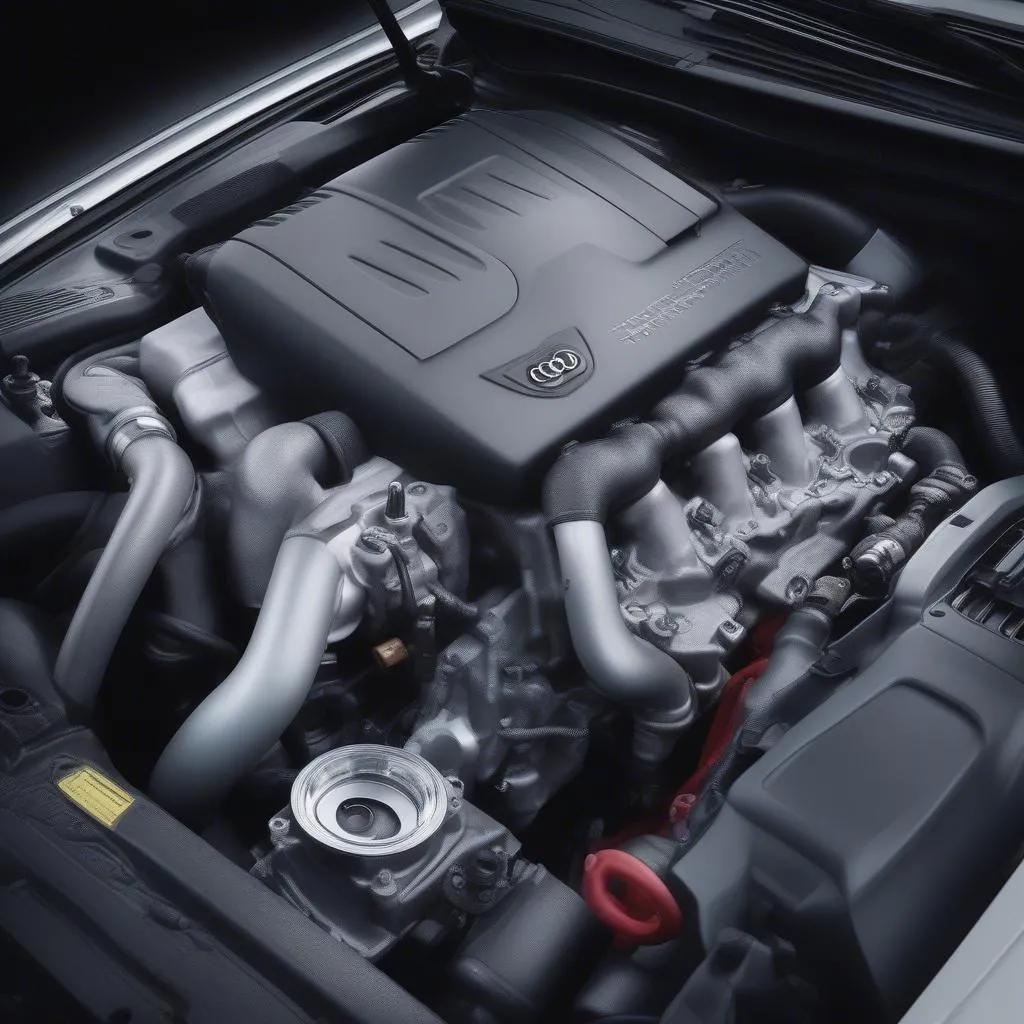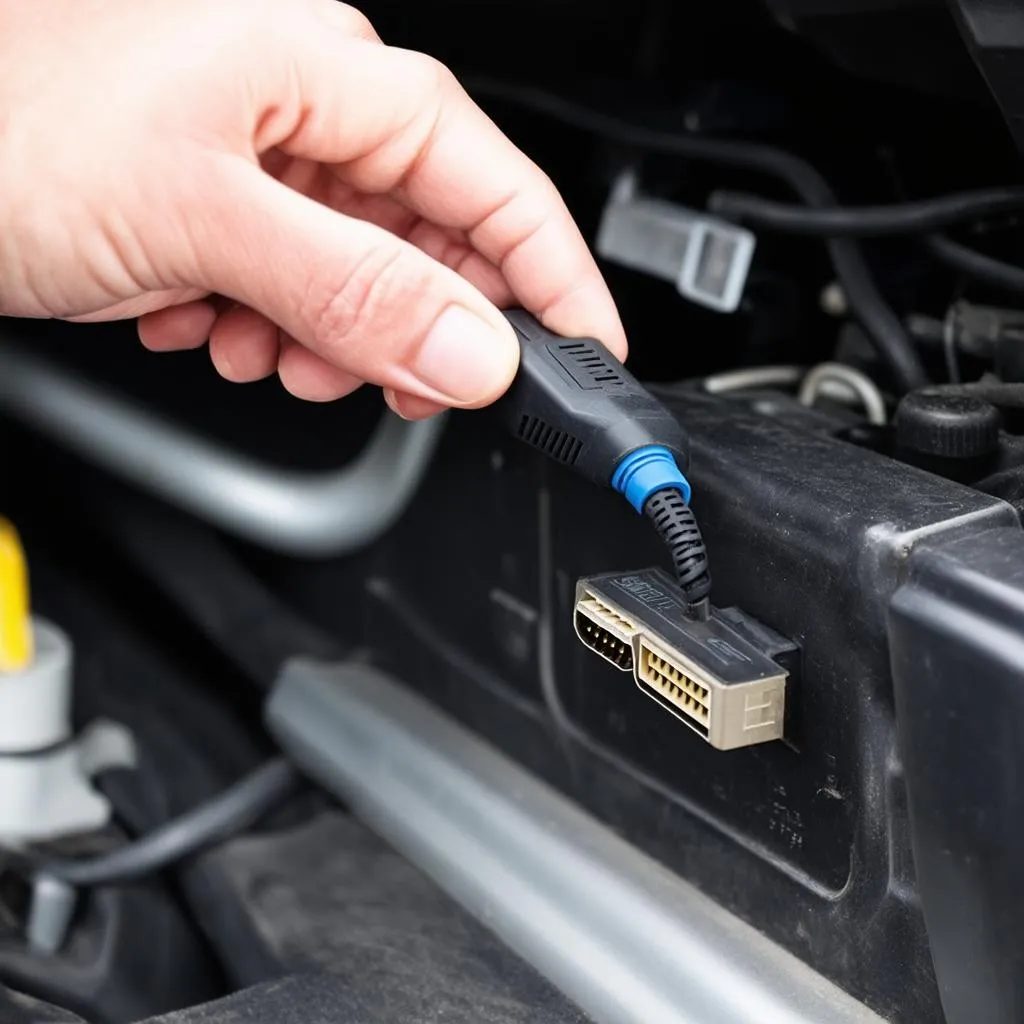Diesel Particulate Filters (DPFs) are essential for reducing harmful emissions from modern diesel vehicles. However, they require periodic regeneration to burn off accumulated soot. This guide explores how to perform a DPF regen using VCDS, a powerful diagnostic tool for Volkswagen, Audi, Seat, and Skoda vehicles. Understanding the process of dpf regen vcds can save you time and money.
Understanding DPF Regeneration
DPF regeneration is the process of burning off accumulated soot within the DPF. This process is crucial for maintaining the performance and longevity of your diesel engine. There are two types of regeneration: passive and active. Passive regeneration occurs naturally during highway driving at higher speeds and exhaust temperatures. Active regeneration, on the other hand, is initiated by the engine control unit (ECU) when soot levels reach a certain threshold. This involves injecting extra fuel into the exhaust system to increase the temperature and burn off the soot.
When active regeneration fails to complete due to driving conditions, or if the DPF becomes excessively clogged, manual intervention with a diagnostic tool like VCDS may be necessary. Performing a dpf regen vcds can help restore your vehicle’s performance and prevent costly repairs.
How to Perform a DPF Regen with VCDS
Using VCDS to initiate a DPF regeneration requires some technical knowledge and careful adherence to procedures. It’s essential to follow the correct steps to avoid potential damage to your vehicle. Before you begin, ensure your vehicle is parked in a well-ventilated area, the engine is at operating temperature, and the parking brake is engaged.
- Connect your VCDS interface to the vehicle’s OBD-II port and launch the software.
- Select the “Select Control Module” option.
- Choose “Engine” from the list of available modules.
- Go to “Basic Settings” and select the appropriate channel for DPF regeneration. This channel varies depending on the specific engine code and model year of your vehicle. Consult the VCDS documentation for the correct channel for your car.
- Follow the on-screen prompts provided by VCDS to initiate the regeneration process.
- Monitor the soot loading percentage displayed in the measuring blocks. The regeneration is typically complete when the soot loading drops below a specified threshold.
Common Issues and Troubleshooting
While DPF regeneration with VCDS is generally straightforward, some issues may arise. One common problem is an interrupted regeneration due to low fuel levels, faulty sensors, or other underlying engine problems. If the regeneration fails to complete, it’s crucial to diagnose and address the root cause before attempting another regeneration. For specific models like the VW Touareg, consult resources like vw touareg dpf regeneration vcds for tailored guidance. Understanding the vw dpf regeneration procedure vcds is also helpful for various Volkswagen models.
“Regular maintenance and understanding how to perform a dpf regeneration vcds is essential for the longevity of a diesel engine,” says John Miller, a certified automotive technician with over 20 years of experience. He adds, “Ignoring DPF issues can lead to costly repairs down the road.”
Another issue could be difficulty in initiating the regeneration through VCDS. This might be due to an outdated software version or incompatibility with your specific vehicle model. Ensure you are using the latest version of VCDS and refer to the documentation for compatibility information. If you need help getting started with the process, you can check out how to start dpf regeneration vcds.
Conclusion
Performing a DPF regen with VCDS is a valuable skill for any diesel vehicle owner or technician. By understanding the process and following the correct procedures, you can maintain the health of your DPF, improve fuel efficiency, and avoid expensive repairs. While VCDS provides a powerful tool for vcds dpf regeneration, remember to address any underlying issues that may be hindering the regeneration process. Regular maintenance and proactive DPF management are key to ensuring the long-term performance and reliability of your diesel engine.
Need assistance with your DPF regeneration? Contact us via WhatsApp: +1 (641) 206-8880, Email: CARDIAGTECH[email protected] or visit us at 276 Reock St, City of Orange, NJ 07050, United States. We offer 24/7 customer support.


